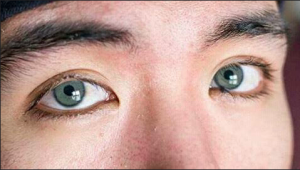For the past 5,000 years, mankind has been arduously battling one of the most complicated diseases ever to exist: Cancer. Cancer has ravaged our world and overwhelmed centuries of medical science and technology. Just in 2018, it claimed the lives of an estimated 9.6 million humans and more people are being diagnosed with this disease daily. The need for a cure has been imminent for a very long time now. Humans have dreamt and imagined different ways of gaining the upper hand in this archaic war. From as early as the late 60’s, science fiction has portrayed nanoscale methods of curing human diseases, most especially cancer, in movies and books. At the time, one could only dream of such ever becoming a reality. How often are the movies true and applicable to reality? It seemed like a dream and even now, many people are still dreaming of such advancements in technology. Dream no more- a new scientific technology, known as nanomedical technology, may have the potential to end the war on cancer.
With the discovery of nanomedical technology, scientists have been able to create the world’s very first set of microscopic nanorobotic soldiers. These nanobots, as they call them, are carefully loaded with clot-forming proteins, such has thrombin, or chemotherapeutic drugs like methotrexate are able to track and kill cancer cells in different ways- the worlds very first microscopic spec ops mission. This incredible feat was achieved through nanomedical technology which started in the early 2000’s after being coined out of nanotechnology. Originally, it was not given much attention as it seemed impractical at the time but as years passed and our knowledge of technology continued to increase, it became more prominently known worldwide as a potential treatment of a wide range of diseases. The method of operation of this technology is characterized by swarms of nanoscale robots that swim through the blood to find the source of a diagnosed disease and then either administer drugs to that specific site or use in-built machinery like drills to destroy the source completely. For cancer treatment, they are designed to locate and destroy tumor cells or cancerous growths as the case may be.
Nanobots can be designed in different ways depending on the function they are intended to serve. The simpler nanobots, usually designed to cut off tumor’s blood supply, have simple structures analogous to any fuel tanker: a cylindrical containment containing cargo. The cylindrical containment is designed from an M13 rectangular bacteriophage DNA sheet using a technique called DNA origami which is characterized by folding DNA on an extremely small scale. Attached to the rectangular sheets are 4 thrombin enzymes designated at specific locations in the middle, tumor-targeting DNA at the vertices of the rectangular sheet and fastener strands that fasten the nanobot into a tubular shape in order to protect the thrombin cargo.
The tumor-targeting DNA is then able to track tumor cells by binding to specific proteins located only on tumor cells. When this happens, the tubular nanobot is unfolded and the thrombin cargo is released into the blood vessel and the body responds naturally to the thrombin’s presence in the blood by forming a blood clot in the blood vessel, blocking the supply of blood to the tumor and causes the tumor to die due to oxygen shortage.
A group of scientists from Arizona State University and the National Center for Nanoscience and Technology of Chinese Academy of Sciences actually manufactured a large number of these nanobots and studied their effects on the progression of cancerous tumors in mice models to see if they actually perform as intended. Incredibly, the median survival time of the mice was increased and the mice showed signs of tumor regression.
Another group of scientists from medical science universities in Iran, used nanoparticles (another name for simple nanobots) loaded with chemotherapeutic drugs, doxorubicin and methotrexate, on rats with chemically induced cancer to assess their efficacy as opposed to orally delivering these drugs. The nanoparticles proved to be more efficient as they caused a significant drop in the rate of cancer cell proliferation as well as the degree of malignancy of the tumors. Below is an infographic explaining the structure and design of these nanobots.
The more structurally complex nanorobots however, have designs hypothesized to contain nanoscale biosensors, radiation cameras, drills and chemotherapeutic drug storages embedded into a machine roughly half the size of a cell. Given the difficulties of creating something so tiny, the hypothesized nanobots would be printed using 3D printers and loaded with drugs using specially designed machines.
Prior to being injected into the patient, the patient would be given a dose of radiotracers, a harmless radioactive substance that accumulate at regions of cancerous growth. Once deployed, the battalion of nanobots use their gamma ray cameras to detect positrons emitted by the radioligands in the radiotracers and calculate the shortest possible path towards those regions using its microprocessors. After determining which route to take, the nanobots use motors designed to flow with the blood and biosensors to dodge blood constituents and obstacles until it reaches its destination. Once at the target, the nanobot is remotely instructed to inject chemotherapeutic drugs to the cancerous cells, or drill through them entirely in a completely painless procedure. Amazingly, after these soldiers accomplish their mission, they are instructed to go through the body’s excretory system and come out in your feces.
Currently, seeing as modern technology does not have the capabilities of creating a nanoscale robot packed with so much equipment, large prototypes of this hypothesized design are being experimented. One scientist, R.Maheswari, has manufactured a prototype for the nanobot. The prototype is able to use the navigation system of a nanobot to successfully maneuver obstacles courses designed to mimic the bloodstream. Right now, the only problem he faces is to scale the robot down to nanoscale.
Even though this breakthrough sounds promising, this technology has a long way to go before it becomes widely used as a medical treatment but on thing is for sure, as the level of modern technology continues to rise, we are destined to get a cure for cancer soon and this incredible breakthrough is an indicator of how close this inevitability is from now.
Bibliography:
Li, S., Jiang, Q., Liu, S. et al. A DNA nanorobot functions as a cancer therapeutic in response to a molecular trigger in vivo. Nat Biotechnol 36, 258–264 (2018). https://search.proquest.com/docview/2011288340?pq-origsite=summon
Moradzadeh Khiavi, M., Rostami, A., Hamishekar, H., Mesgari Abassi, M., Aghbali, A., Salehi, R., … Sina, M. (2015). Therapeutic Efficacy of Orally Delivered Doxorubicin Nanoparticles in Rat Tongue Cancer Induced by 4-Nitroquinoline 1-Oxide. Advanced pharmaceutical bulletin, 5(2), 209–216. doi:10.15171/apb.2015.029https://www.ncbi.nlm.nih.gov/pmc/articles/PMC4517077/?tool=pmcentrez&report=abstract
R., Maheswari, et al. “Cancer Detecting Nanobot Using Positron Emission Tomography.” Procedia Computer Science, vol. 133, 2018, pp. 315-322.,https://www.sciencedirect.com/science/article/pii/S1877050918309840?via%3Dihub
Photo credits:
Image 1: The Nanorobotics Laboratory, Polytechnique Montreal. https://www.polymtl.ca/salle-de-presse/en/newsreleases/legions-nanorobots-target-cancerous-tumours-precision
Image 2: The Biodesign Institute, Arizona State University . https://asunow.asu.edu/20180212-discoveries-cancer-fighting-nanorobots-seek-and-destroy-tumors


